Centrifugal pumps are unique and important members of the industrial world. The purpose of a centrifugal pump is to move fluid in a controllable fashion by engaging the fluid with strong rotational kinetic energy. This rotational energy increases the pressure of a fluid during the pumping process. While centrifugal pumps are sometimes used to raise liquid levels, they are most often used to induce a pressurized liquid flow. Read More…
At Armstrong Fluid Technology, we pride ourselves on our expertise in designing and manufacturing innovative fluid management solutions, with a strong emphasis on centrifugal pumps. Our commitment to engineering excellence enables us to provide high-performance products that meet the diverse needs of our clients across various industries.
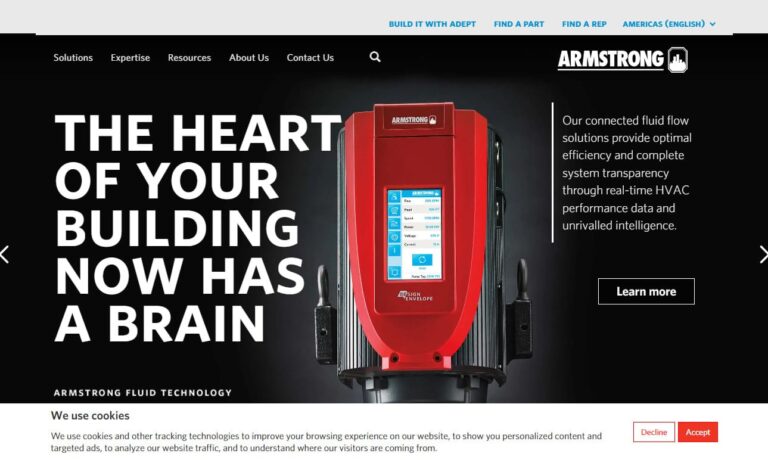
Fistam Pumps is driven by innovation. Manufacturing four lines of high quality centrifugal pumps, we consider the interaction of a pump and its system to develop the optimum solution for every client. Stainless steel ensures hygienic use for chemical and water pumps in any application. We invest in research and development so you can expect superior quality and performance in every Fristam pump.
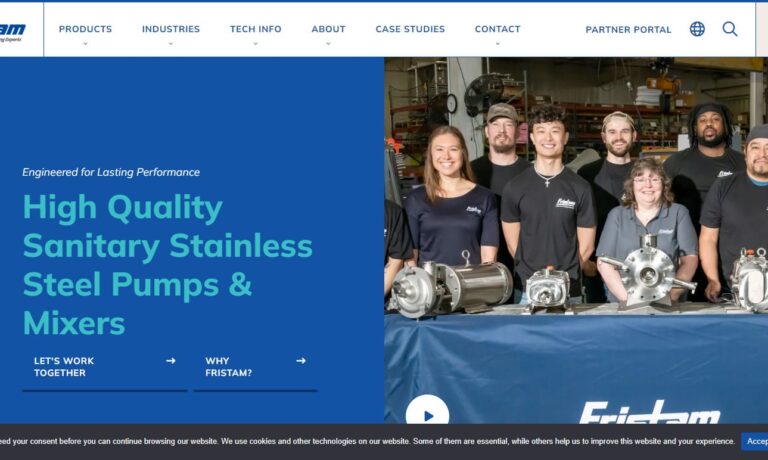
Triflo International, Inc. designs and manufactures solid separation equipment. The company’s products include shakers, desanders, desilters, mud cleaners, mud gas separators, vacuum degassers, and mud systems; and fast move mud systems, skidded mud systems/tanks, HDD and trenchless mud systems, dredging and dewatering systems, and solids control equipment, as well as soil washing, dewatering,...
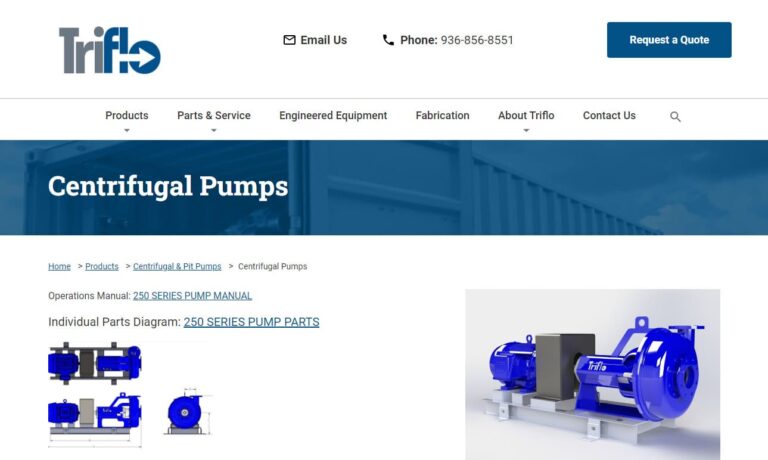
Tramco Pump is proud of our inventory and quick delivery of parts, pumps and custom designed systems. Our impressive line includes centrifugal pumps offering flows to 75,000 GPM heads to 2,200ft as well as vertical, sewage and sump, rotary, diaphragm pumps and more to ensure your needs are met. With testing, repair and preventative measures; Tramco delivers the best products with the best service.
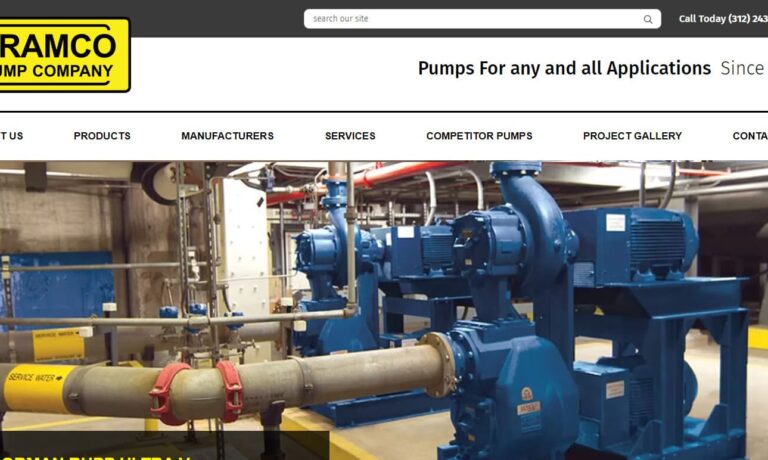
More Centrifugal Pump Manufacturers
Centrifugal pumps belong to the rotary machine family within the realm of industrial equipment. These mechanical devices are designed to move fluids by transforming the rotational energy generated by an impeller into kinetic energy. They are extensively employed across numerous industries for tasks such as fluid transfer, circulation, and pressure generation.
History
Although centrifugal pumps were invented in Europe in the late seventeenth century and made their way to the U.S. in the early nineteenth century, their widespread use in the industrial world is a more recent development. For many years, positive displacement machines dominated, overshadowing centrifugal pumps. It wasn’t until the early twentieth century, with advancements in high-speed technology—such as high-speed electric motors and steam turbines—that centrifugal pumps became a practical and popular choice. Over the past seventy-five years, this technological shift has led to their extensive use across various industries.
Materials
Centrifugal pumps are predominantly crafted from cast iron or metals such as aluminum, chosen for their ability to endure harsh chemicals and challenging conditions that would deteriorate other materials. The choice of materials in centrifugal pump construction is crucial to its efficiency. With the growing popularity of centrifugal pumps, research and development have broadened the spectrum of materials used. While robust metals with high corrosion resistance remain the preferred choice, an increasing number of manufacturers are incorporating fluorocarbons and thermoplastics for seals and various other components.
Parts
Centrifugal pumps, while incredibly versatile and available in numerous types, share a strikingly simple fundamental design. Each pump is composed of just three core elements: the impeller, the casing (typically a volute), and the pumping unit (or mechanical assembly).
The impeller stands as the hallmark of a centrifugal pump, essential for generating rotary energy and velocity. At its core, known as the eye or hub, the impeller features one or more vanes that radiate outward. Impellers come in a range of diameters and can achieve various rotational speeds, reflecting their versatile design and function.
The pumping unit, or mechanical assembly, encompasses the essential components that facilitate the rotation of the impeller. At its core, this section includes a stationary pump and a driver, which is typically an electric motor but may also be a natural gas engine or steam turbine. The impeller is attached to the rotating shaft of the driver, enabling its motion. Additionally, the unit features bearings to support the driver shaft, sealing mechanisms to prevent fluid leakage, structural elements to endure various loads and stresses, and wear surfaces to facilitate maintenance and repair.
The parts we’ve discussed are all enclosed within a casing. While the volute is the most common type of casing and is often used interchangeably with the term “casing,” its role extends beyond just protecting the internal components of the pump. In reality, it plays a crucial role in transforming the rotational energy generated by the impeller into a controlled liquid flow.
How It Works
The operation of a centrifugal pump reveals a remarkable simplicity. As the shaft rotates, it drives the attached impeller, which also spins. Fluid is directed to the center, or eye, of this spinning impeller by the pump. The impeller’s rotation imparts significant kinetic energy to the incoming fluid, pushing it outward to the tips of the impeller vanes. As the liquid is forcefully expelled from the impeller’s outer edges, it is directed into the pump’s casing. Here, the high-speed liquid meets resistance from the casing, causing its velocity to decrease and its pressure to rise. The pressurized fluid is then expelled through the discharge ports located at the outer edge of the volute channels.
The impeller’s design within the casing is key to controlling and generating the discharge. Rather than being centered, the impeller is typically positioned so that its outer edge extends just beyond the discharge port in the casing channel. This region, called the cutwater, marks where the gap between the impeller and the casing wall begins to widen, extending all the way to the discharge point. This distinctive configuration maximizes the pressure of the liquid being expelled, directing it effectively through the casing and toward the discharge.
Advantages and Disadvantages
Centrifugal pumps provide a range of benefits that make them a staple across various industries and applications. Their design is notably straightforward, featuring a rotating impeller that generates centrifugal force to move fluids. This simplicity not only facilitates easy installation, operation, and maintenance but also contributes to cost savings and minimized downtime. Additionally, centrifugal pumps are highly efficient, capable of handling substantial flow rates and producing high discharge pressures. This efficiency makes them ideal for both low and high flow scenarios, allowing them to transfer fluids over long distances and navigate elevation changes with ease.
They excel in managing a diverse array of fluids, from those with varying viscosities to those containing abrasive particles. Their versatility makes them ideal for industries such as mining, wastewater treatment, and chemical processing, where they efficiently handle both clean and dirty liquids. These pumps are designed to function effectively across a broad spectrum of operating conditions, accommodating different flow rates, pressures, and temperatures. Their flexibility allows for customization to meet specific needs. Additionally, centrifugal pumps can be configured in parallel or series arrangements to boost performance and provide redundancy, ensuring reliable operation even if one pump encounters an issue.
Centrifugal pumps are typically more compact and lighter than other pump types, making them easier to install in confined spaces. Their streamlined design not only saves on material and construction costs but also enhances their reliability and durability. With fewer moving parts, these pumps experience less wear and tear, which minimizes the chances of breakdowns and lowers maintenance needs. This dependable performance leads to greater uptime, improved productivity, and reduced overall operating expenses.
In summary, centrifugal pumps stand out for their simplicity, efficiency, versatility, and broad fluid handling capabilities. Their adaptability to diverse operating conditions, compact design, and reliability make them a preferred choice across many industries. These attributes ensure effective fluid transfer and significantly enhance operational success.
Centrifugal pumps, despite their numerous advantages, come with a set of limitations and drawbacks. They struggle with high-viscosity fluids, as their efficiency drops when dealing with thick or viscous substances. Cavitation presents another challenge, potentially causing damage and reducing performance. These pumps also face difficulties with solids or abrasive particles, which can lead to wear and damage to both the impeller and casing. The operating conditions, including flow rate and head pressure, greatly influence their performance, necessitating careful selection and sizing. Additionally, noise and vibration are common issues. By recognizing and addressing these limitations during the pump selection and design process, you can better manage potential problems and achieve optimal performance for specific applications.
Types and Applications
Centrifugal pumps come in various types, each designed for specific applications. They are versatile devices capable of transporting a wide range of substances, including chemicals, corrosive materials, oil, resin, acid, bleach, and more. Often, these pumps are recognized by their intended use or by the distinctive characteristics of their core components.
Types of Pumps by Application
We offer water pumps designed for a wide range of water transfer applications. Our pumps are known for their versatility and lightweight construction, and they can also deliver high pressure when required. Among our offerings, the sump pump stands out as a popular choice, especially for residential use. It effectively prevents flooding and manages water accumulation in low-lying areas. Additionally, we can pair the sump pump with a pressure tank to facilitate efficient water distribution away from its source.
Trash pumps are specialized centrifugal units built to handle substantial volumes of water quickly. Unlike standard pumps, they are engineered to deal with contaminated liquids such as sewage, sludge, and wastewater, which are often thick and highly viscous. Viscosity describes a fluid’s internal resistance to flow. To manage these challenging materials, a trash pump features an impeller with deep veins and a large discharge, designed to generate the kinetic energy needed to move these heavy, viscous fluids efficiently.
A jet pump operates as a centrifugal pump enhanced by jets that maximize its suction power. As technology advances, centrifugal pumps are becoming increasingly robust, capable of lifting heavier fluids across various industries. However, jet pumps are gradually being overshadowed by the rising capabilities of submersible pumps. Submersible pumps are specifically designed for use in underground environments where water is consistently present. Unlike jet pumps, submersible pumps do not need to expel air from their suction lines to ensure a steady flow. They are engineered as compact units with the motor and pump closely integrated, allowing the entire assembly to be submerged directly into a well. These well pumps typically rely on an adjacent electrical power source.
Our latest self-priming pump models significantly reduce startup time, enhancing efficiency from the get-go. For applications where maintenance, sanitation, and gentle handling are crucial, we now offer hygienic centrifugal pumps designed to meet these specific needs.
Types of Pumps by Parts or Design
A close-coupled end-suction pump is a type of centrifugal pump known for its efficient design. It features a close-coupled configuration where the impeller is mounted directly on the motor shaft, and the casing is securely attached to the motor’s face. This design makes it one of the most prevalent centrifugal pump types, combining simplicity with effectiveness.
We can optimize the design of a centrifugal pump to address specific needs. For example, axial flow pumps feature a vertical shaft with an impeller mounted perpendicularly. This design is intended to propel liquids upward.
Considerations
Centrifugal pumps are undeniably versatile and valuable industrial tools. To fully harness their potential, it’s essential to consider several key factors. Here, we briefly outline some of the most important considerations.
The kinetic energy imparted to a liquid grows with both the diameter and speed of a pump’s impeller. Therefore, the easiest method to alter a pump’s performance is by adjusting the impeller’s speed or diameter. Among these options, changing the diameter is generally more cost-effective and thus more commonly used. In some cases, combining adjustments to both the impeller speed and diameter is done to achieve a desired outcome.
The energy required to move liquid for any given application is influenced by both its viscosity and the volume of liquid being transported. A crucial concept in centrifugal pumps is “head,” which denotes the theoretical vertical height (measured in feet or meters) that a liquid could potentially reach when exiting the pump. This theoretical height, also referred to as shut-off head, indicates the point at which a pump can no longer generate sufficient energy to move additional liquid. When choosing or operating centrifugal pumps, it is important to evaluate their performance based on head measurements and make necessary adjustments to minimize friction within the system.
Suction conditions are often underestimated, to the dismay of many pump users. This term defines the ideal circumstances necessary for a pump to effectively create a partial vacuum, which enables pressure to drive liquid up through a suction pipe into the pump. It’s important to remember that liquids can’t be “pulled” vertically due to their lack of tensile strength. Suction conditions are crucial, especially in high-altitude settings, as a pump’s maximum suction lift (in feet) diminishes as altitude increases.
Choosing the Right Centrifugal Pump Supplier
For a successful purchase of a centrifugal pump, it’s crucial to evaluate various suppliers. Our directory of centrifugal pump suppliers is designed to assist you in this process. Each supplier’s business profile page showcases their expertise and capabilities, and includes a contact form for direct inquiries or quote requests. Utilize our patented website previewer to swiftly understand each company’s specialization. After reviewing, you can easily use our RFQ form to reach out to multiple suppliers with a single submission.


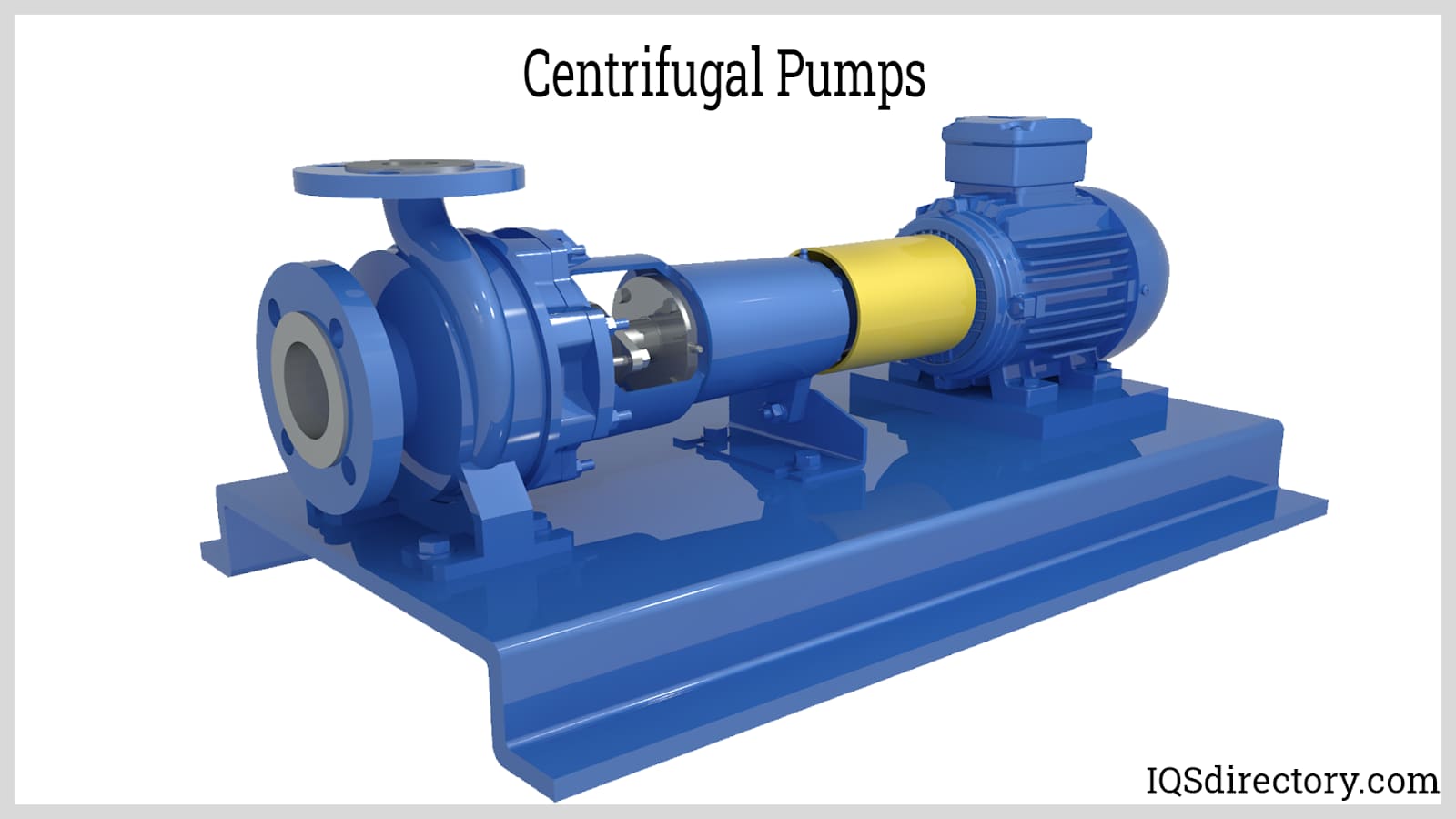
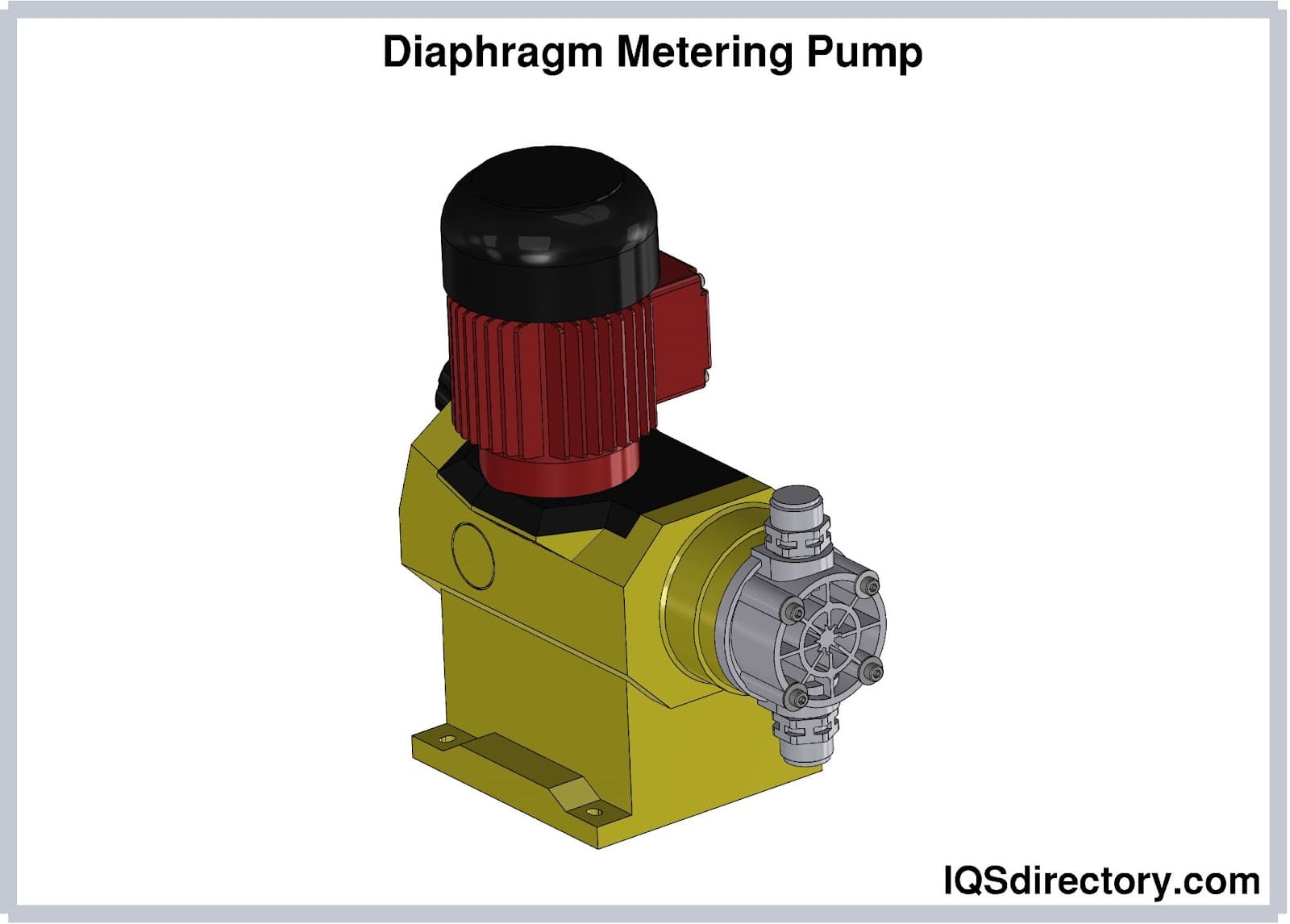
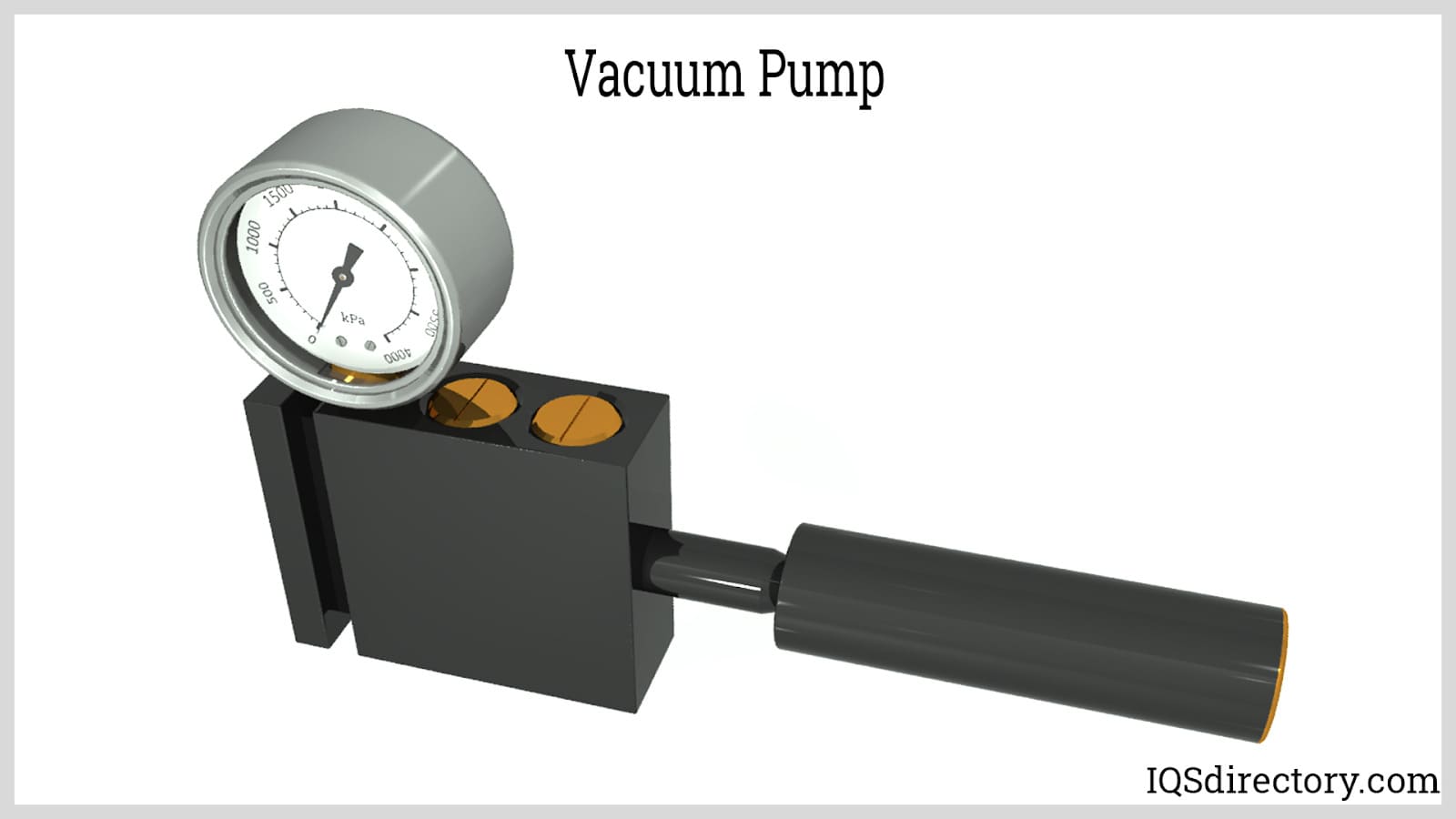
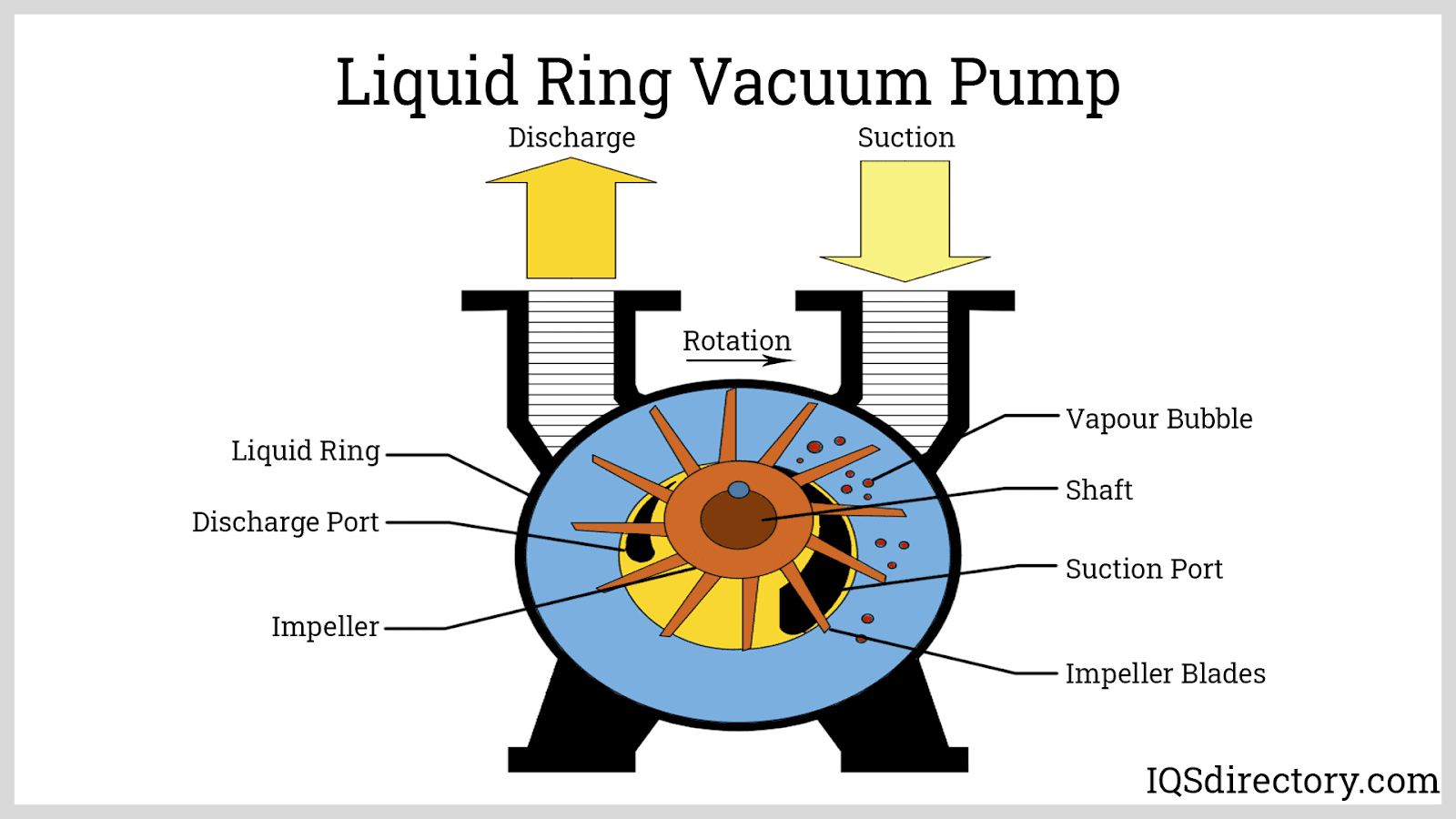
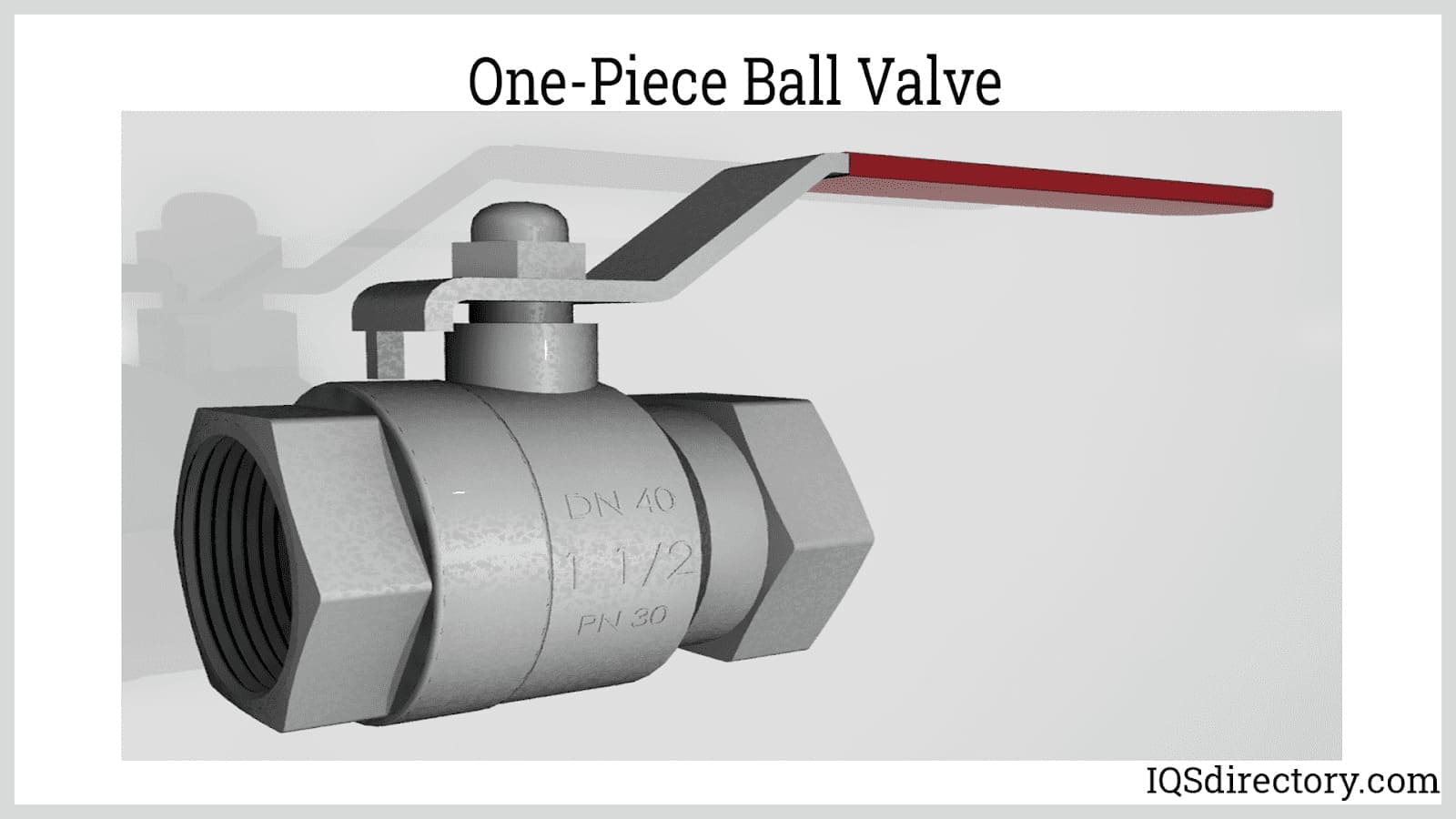
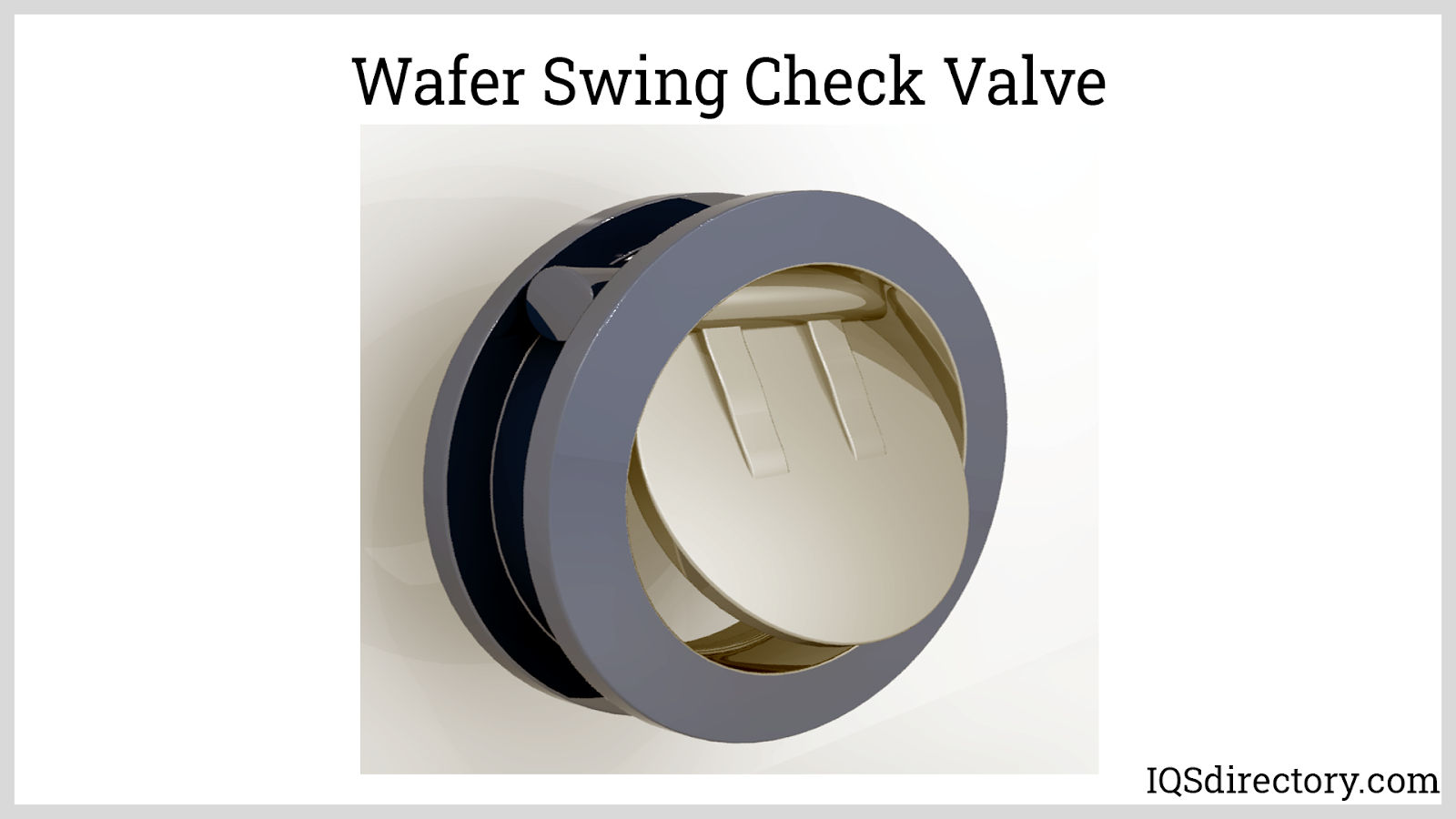
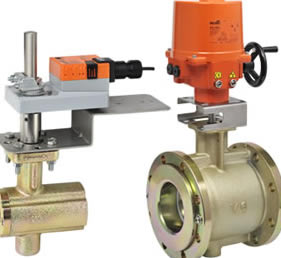 Ball Valves
Ball Valves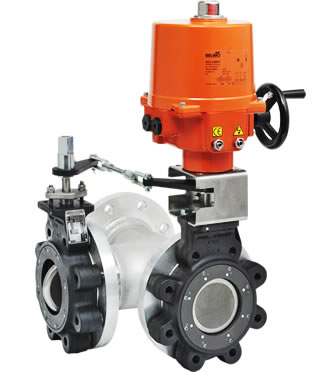 Butterfly Valves
Butterfly Valves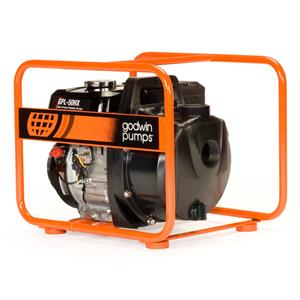 Centrifugal Pumps
Centrifugal Pumps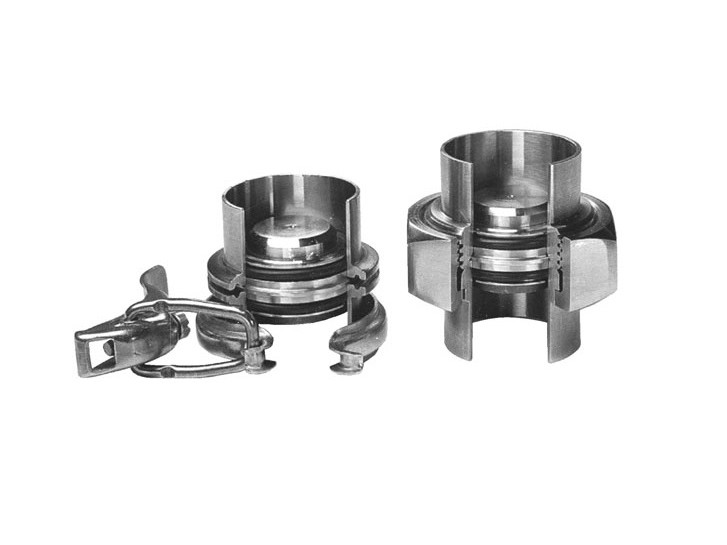 Check Valves
Check Valves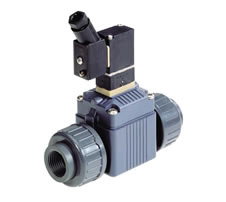 Diaphragm Valves
Diaphragm Valves Flow Meters
Flow Meters Hydraulic Pumps
Hydraulic Pumps Hydraulic Valves
Hydraulic Valves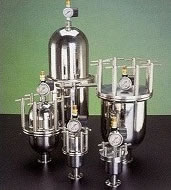 Metering Pumps
Metering Pumps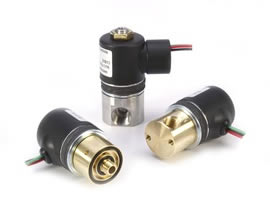 Solenoid Valves
Solenoid Valves Vacuum Pumps
Vacuum Pumps Castings & Forgings
Castings & Forgings Bulk Material Handling
Bulk Material Handling Electrical & Electronic Components
Electrical & Electronic Components Flow Instrumentation
Flow Instrumentation Hardware
Hardware Material Handling Equipment
Material Handling Equipment Metal Cutting Services
Metal Cutting Services Metal Forming Services
Metal Forming Services Metal Suppliers
Metal Suppliers Motion Control Products
Motion Control Products Plant & Facility Equipment
Plant & Facility Equipment Plant & Facility Supplies
Plant & Facility Supplies Plastic Molding Processes
Plastic Molding Processes Pumps & Valves
Pumps & Valves Recycling Equipment
Recycling Equipment Rubber Products & Services
Rubber Products & Services